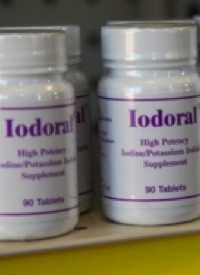
What about the public health threats to the Japanese people, especially those already stricken by the effects of the March 11 earthquake and tsunami that has claimed the lives of thousands and left many more homeless and suffering? The New American (TNA) posed this question to Ed Hiserodt, author of the book Underexposed: What if Radiation Is Actually Good for You?
Hiserodt: There really isn't a good answer to that question yet. The problem is there have been no trusted sources of information on which you can reliably formulate conclusions.
TNA: Are the dire media predictions credible?
Hiserodt: Not the predictions that radiation could harm the public. But it could possibly cause some radiation sickness to the workers. This unprecedented release of radiation could worsen.
TNA: If the reactors were shut down seconds after the earthquake hit, why are they still dangerous?
Hiserodt: The reactors don't pose any danger. The control rods inserted, as you said, seconds after the earthquake, immediately stopped the nuclear fission reaction. The "decay" heat that is left has damaged the cladding, but even a meltdown of them would not be a problem. The cores can't catch fire because they are made of noncombustible material, and there are 17 feet of concrete and sand beneath the reactor vessels. Add to that the fact that each day their decay heat decreases. Soon the reactors won't be generating enough excess heat to even damage the cladding.
TNA: What about the explosions that already occurred at Fukushima?
Hiserodt: Those were hydrogen gas explosions that happened outside the reactor containment structures. They did not release significant amounts of radiation.
TNA: What, then, is the source of the danger now?
Hiserodt: The problem is with the spent fuel storage pools (SFPs), even in the two reactors that were shut down for maintenance before the earthquake and tsunami. These are pools with egg carton type containers for the spent fuel rods before they are taken for reprocessing. Depending on their age in the pool, they are at various levels of radiation and associated thermal generation. Young fuel rods are very radioactive and thermally hot to the point they might melt the zirconium holding assemblies and expose the actual fuel elements. Keeping them cool so that doesn't happen is the biggest challenge the reactor workers face now.
TNA: How do they keep them cool?
Hiserodt: They keep them covered with water. Earthquakes have a well-known propensity to slosh water out of pools. A friend of mine was in San Francisco during the famous 1989 World Series quake and was astounded that the Holiday Inn swimming pool was virtually emptied by that 6.9 killer. We might expect the same thing to happen to the SFPs, and that would be no problem if you could fill them back up. But with what? Most pumps don't work, and the few that do are injecting water at high pressure into at least one of the reactors to keep them cool. With no water in the pools, evaporation lowers the levels, which increases the evaporation until they are totally uncovered. In the wake of the earthquake and tsunami, pouring in more water isn't that easy, as we've seen with fire trucks 100 yards from the SFPs, and the helicopters that were just a laugh.
TNA: What is the current status of the SFPs?
Hiserodt: I heard good news from RadSafe, the International Radiation Protection (Health Physics) Mailing List. Workers have been able to restore off-site power and diesel generators to pump water into the SFPs. They've also taken precautions to prevent any more hydrogen gas explosions.
TNA: What is the worst case scenario for public health in Japan?
Hiserodt: In my opinion we should wait to make comments on what is going on till we actually know details. I don't see us gaining anything by being in the fog of confusion. The last update I received measured radiation dose rates at the Fukushima site boundary ranging from 1 millirem to 3 millirem per hour. That’s less than you would get from cosmic radiation in a cross-country airline trip. I just don't see levels reported that warrant all the media hysteria.
TNA: What about reports of iodine-tainted milk and radiation-contaminated fish?
Hiserodt: There is iodine in every ounce of milk you've ever had to drink. None of the news stories I've seen bother to mention the actual amounts detected. As the late, great scientist Petr Beckmann pointed out, some salad dressings have 4900 picoCuries per liter. But I can't find any radiation warning symbols on my Italian vinaigrette bottle.
Photo of bottles of potassium iodide: AP Images
Related articles:




